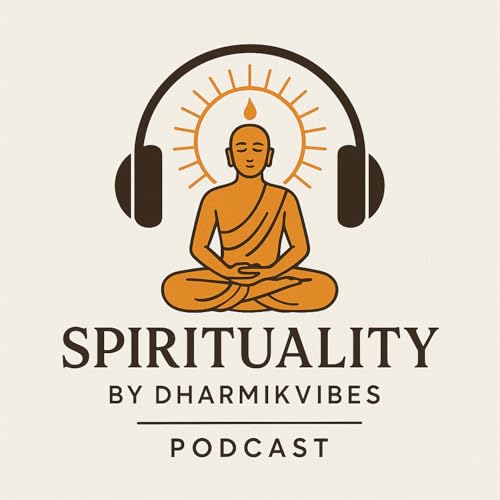The Hindu Calendar for 2026 (Vikram Samvat 2082–2083) follows the traditional lunar–solar Panchang system, where festivals are determined using the movement of both the Moon (tithis) and the Sun (transits/sankranti). Therefore, festivals such as Navratri, Diwali, Holi, Ekadashi, Purnima, Amavasya shift each year according to planetary motion.This comprehensive guide provides:* Month-wise Hindu festivals* Ekadashi, Purnima, Amavasya* Major pujas, jayantis, and spiritual observances* Sankranti (solar transits)* Significant regional celebrations* Auspicious days for spiritual practices and charityAll dates are based on India Standard Time (IST) and aligned with New Delhi Panchang.JANUARY 2026 – Pausha / MaghaJanuary begins with major spiritual days like Makar Sankranti, Pausha Purnima and Basant Panchami.* January 1, Thursday – Shukla PradoshAuspicious for Shiva puja during evening twilight.* January 3, Saturday – Pausha PurnimaSacred bathing day, charity, and Bhagavat Saptah reading.* January 6, Tuesday – Sankashti ChaturthiDedicated to Lord Ganesha. Fast is broken after moonrise.* January 14, Wednesday* Shattila Ekadashi* Pongal / Magh Bihu* Uttarayana Begins* Makar SankrantiSun enters Capricorn – very auspicious for giving sesame and jaggery.* January 16, Friday – Krishna PradoshEvening Shiva worship.* January 18, Sunday – Mauni AmavasyaHighly auspicious for silence (mauna), holy dips, and pitru tarpan.* January 23, Friday – Basant Panchami / Saraswati PujaExcellent for beginning new studies and creative arts.* January 25, Sunday – Ratha SaptamiA key Surya festival symbolizing the beginning of spring.* January 26, Monday – Bhishma Ashtami* January 29, Thursday – Jaya Ekadashi* January 30, Friday – Shukla PradoshFEBRUARY 2026 – Magha / PhalgunaFebruary is marked by the powerful Mahashivratri and Magha Purnima.* February 1, Sunday – Magha PurnimaImportant for Ganga Snan and charity.* February 5, Thursday – Sankashti Chaturthi* February 13, Friday – Vijaya Ekadashi & Kumbha SankrantiEkadashi for victory and removal of obstacles.* February 14, Saturday – Krishna Pradosh* February 15, Sunday – Mahashivratri / Monthly ShivratriOne of the holiest nights of Shiva worship; night vigil and four-prahar puja.* February 17, Tuesday – Phalguna AmavasyaOccurs near an Annular Solar Eclipse (timings per local Panchang).* February 27, Friday – Amalaki Ekadashi* February 28, Saturday – Shukla PradoshMARCH 2026 – Phalguna / ChaitraA vibrant month with Holi, Chaitra Navratri, and Hindu New Year.* March 3, Tuesday – Holika Dahan & Phalguna PurnimaAlso aligned with a Total Lunar Eclipse.* March 4, Wednesday – Holi (Rangwali Holi)* March 6, Friday – Sankashti Chaturthi* March 15, Sunday – Papmochani Ekadashi; Meena Sankranti* March 16, Monday – Krishna Pradosh* March 17, Tuesday – Monthly Shivratri* March 19, Thursday – Hindu New Year (Chaitra Shukla Pratipada)* Chaitra Navratri Begins* Gudi Padwa (Maharashtra)* Ugadi (South India)* Ghatasthapana* March 20, Friday – Cheti Chand (Jhulelal Jayanti)* March 24, Tuesday – Yamuna Chhath* March 26, Thursday – Rama Navami (Smarta)* March 27, Friday – Rama Navami (Vaishnav / ISKCON); Swaminarayan Jayanti* March 27 – Navratri Parana* March 29, Sunday – Kamada Ekadashi* March 30, Monday – Shukla PradoshAPRIL 2026 – Chaitra / VaishakhaApril brings Hanuman Jayanti, Akshaya Tritiya and Vishu/Mesha Sankranti.* April 2, Thursday – Hanuman Jayanti; Chaitra Purnima* April 5, Sunday – Sankashti Chaturthi* April 13, Monday – Varuthini Ekadashi* April 14, Tuesday – Mesha Sankranti (Solar New Year)Celebrated as Vishu, Puthandu, Baisakhi regionally.* April 15, Wednesday – Krishna Pradosh; Monthly Shivratri* April 17, Friday – Vaishakha Amavasya* April 19, Sunday – Akshaya TritiyaBest for auspicious beginnings, charity, and spiritual acts.* April 23 – Ganga Saptami* April 25 – Sita Navami* April 27, Monday – Mohini Ekadashi* April 28, Tuesday – Shukla Pradosh* April 30 – Narasimha JayantiMAY 2026 – Vaishakha / Jyeshtha (Adhik Maas)A spiritually rich month with Buddha Purnima and Ganga Dashami.* May 1, Friday – Vaishakha Purnima & Buddha Purnima* Early May – Narada Jayanti* May 5, Tuesday – Sankashti Chaturthi* May 13, Wednesday – Apara Ekadashi* May 14, Thursday – Krishna Pradosh* May 15, Friday – Monthly Shivratri; Vrishabha Sankranti* May 16, Saturday – Jyeshtha AmavasyaAlso:* Vat Savitri Vrat (in many regions)* Shani Jayanti* May 25 – Ganga Dashami* May 27, Wednesday – Padmini Ekadashi (Adhik Maas)* May 28, Thursday – Shukla Pradosh* May 31, Sunday – Adhik Jyeshtha PurnimaJUNE 2026 – Adhik Jyeshtha / Jyeshtha–Ashadha* June 3, Wednesday – Sankashti Chaturthi* June 11, Thursday – Parama Ekadashi* June 12, Friday – Krishna Pradosh* June 13, Saturday – Monthly Shivratri* June 15, Monday – Amavasya; Mithuna Sankranti* June 25, Thursday – Nirjala EkadashiMost ...
Voir plus
Voir moins
 14 min
14 min 12 min
12 min 14 min
14 min 12 min
12 min 15 min
15 min Nov 25 202514 min
Nov 25 202514 min 15 min
15 min 11 min
11 min
